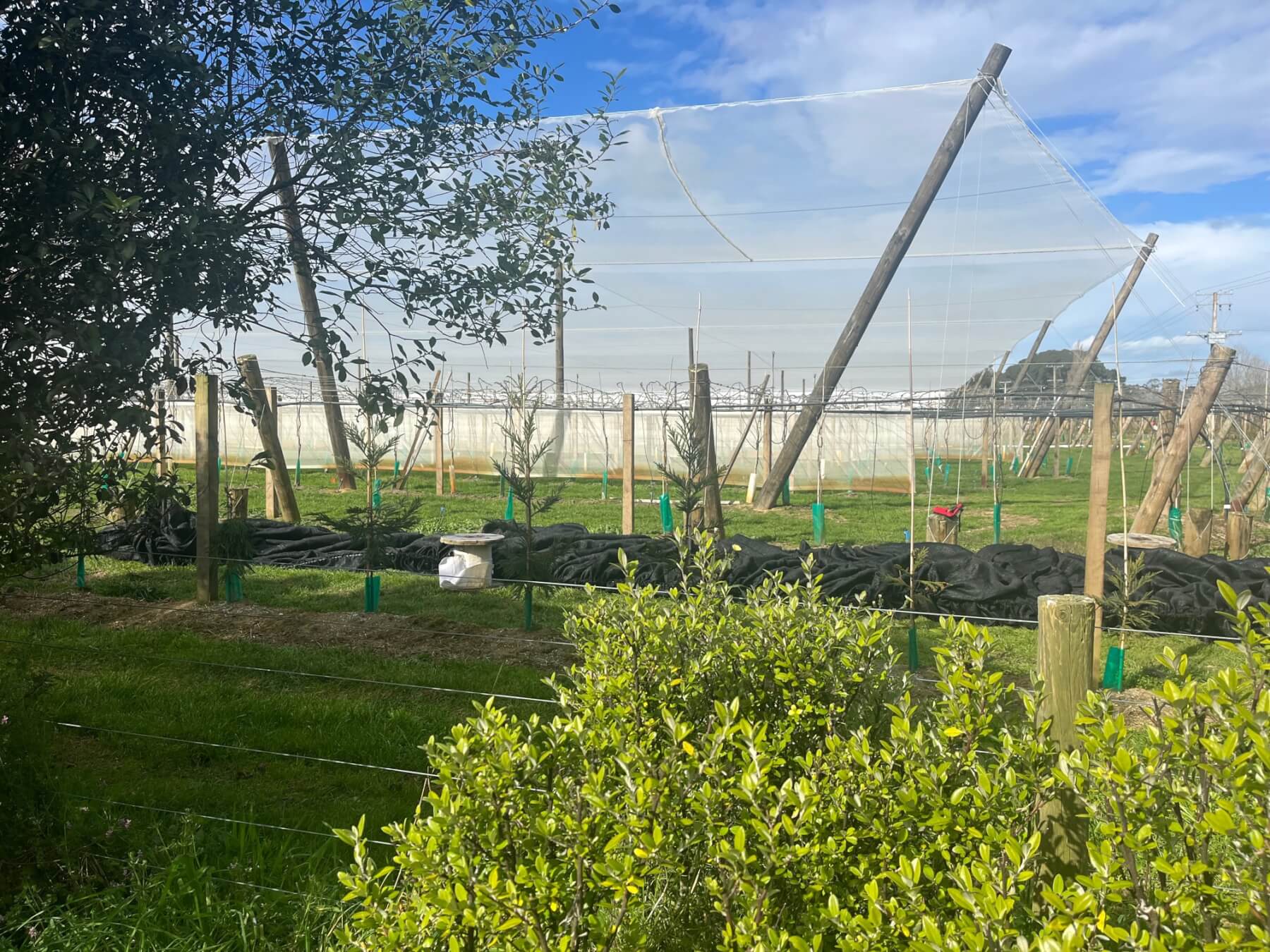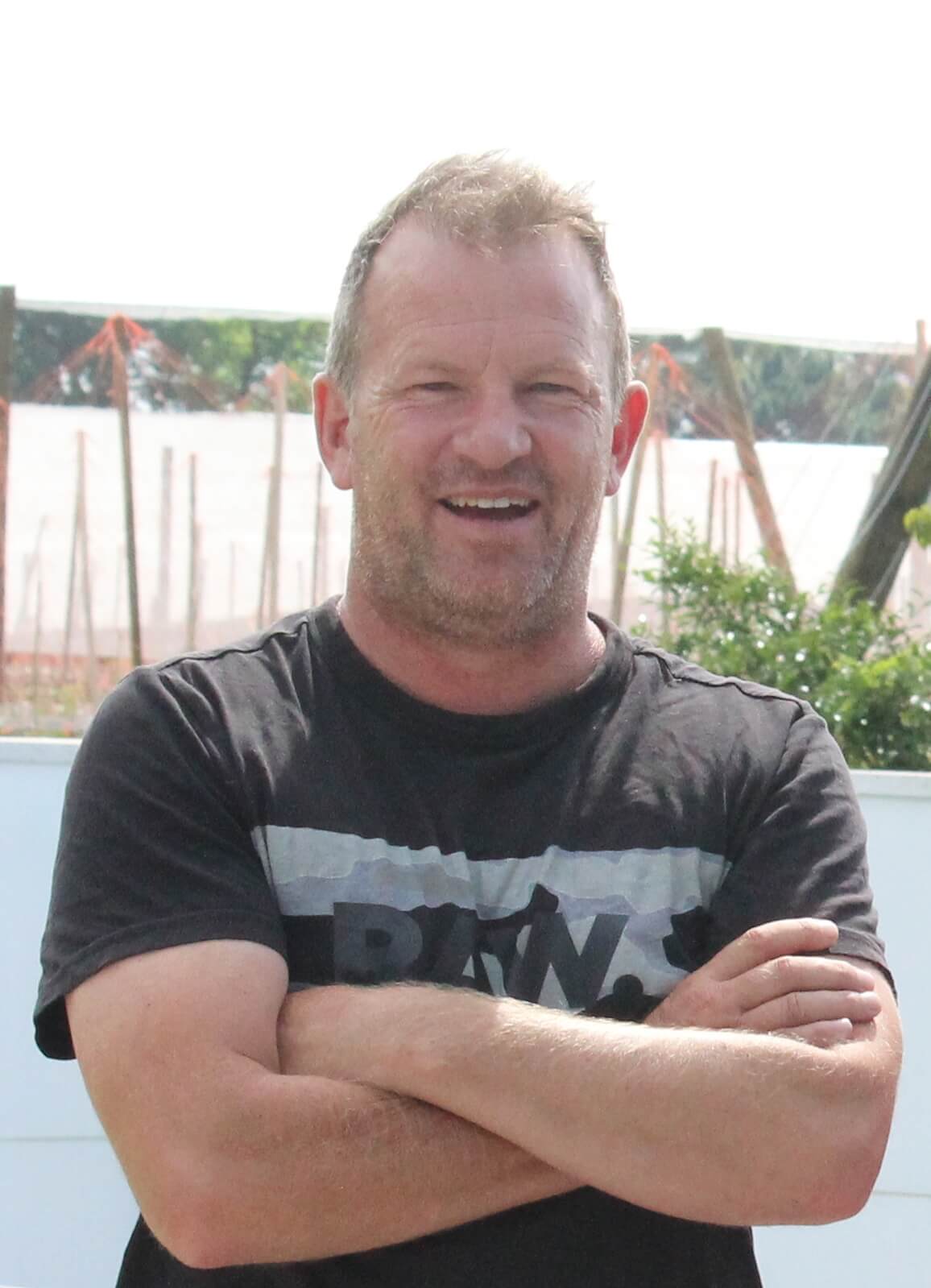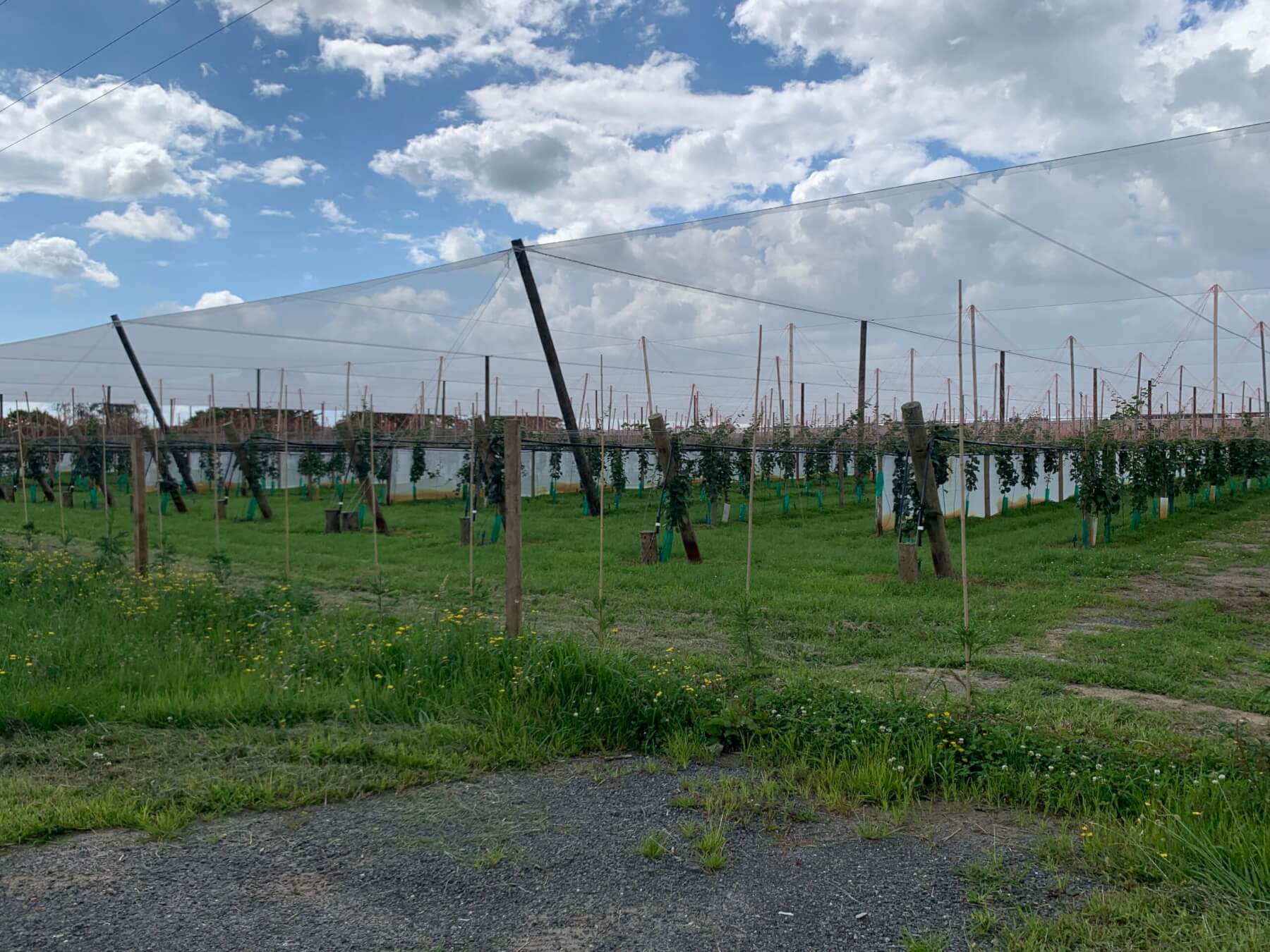Waipā District Council looks set to make some radical changes to its District Plan to accommodate the burgeoning kiwifruit and horticulture industry.

Black side netting waiting to be added to the kiwifruit structures on the eastern boundary less than eight metres from the Jennings’ boundary. Photo: Supplied.
Proposed changes include reducing road and internal boundary setbacks for protective structures over fruit from 15 to six metres, allowing transparent cloth as a colour option for the structures, and replacing shelterbelt shading rules with new height and road setback measurements.
These changes, the 25th under the current plan, have been prompted by the influx into the district over the last three years of kiwifruit growers who established unconsented shelter structures.

Nick Jennings
Ōhaupō life styler Nick Jennings settled with the council last year following mediation. He had filed papers with the Environment Court over the council’s decision to let his neighbour in Parallel Road establish a kiwifruit operation.
He argued that the expansion of the kiwifruit orchard around three sides of his rural property blocked his views and ruined his rural outlook. Similar issues have arisen elsewhere in the district on land previously used for farming.
Policy planner Alice Morris presented the proposed changes at an elected members’ workshop last week.
Work on the plan change began last year. Planners reviewed shelterbelt planting rules, rural zone boundary setbacks, building coverage rules, and colour standards for shade cloth structures. They considered the impact of shelterbelts on neighbouring properties, road safety, and road maintenance.
There was feedback from more than 70 individuals and groups.
Morris emphasised the importance of enabling the “full use” of rural land for primary production while balancing the need to maintain outlooks, views, appearances, and cultural values.

Part of the shade cloth at 582 Parallel Road.
Deputy mayor Liz Stolwyk said she hoped the suggested changes would be well communicated, suggesting after the original publicity two years ago, it had disappeared from people’s radars.
Mayor Susan O’Regan said the work had been tricky because it needed to balance all the competing values. Some of the setbacks had been “outrageous” so it was pleasing to see some compromise among submitters.
“But (Waipā) is nevertheless a rural food producing zone.”
The plan will now be finalised and sent to iwi authorities before its adoption mid-year by the Strategic Planning and Policy committee.

The kiwifruit structures at 383 Parallel Road.









